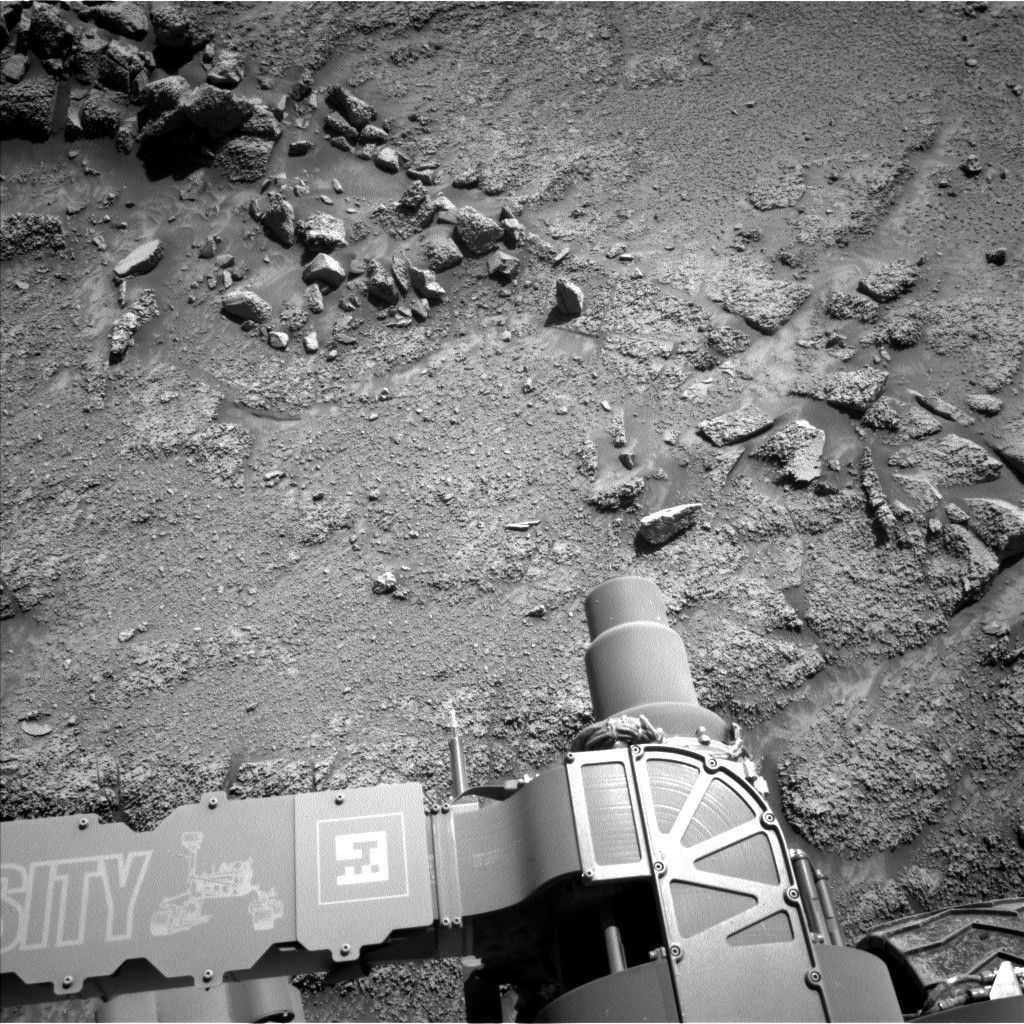- Curiosity Home
- Science
- News and Features
- Multimedia
- Mars Missions
- Mars Home
2 min read

Written by Elena Amador-French, Science Operations Coordinator at NASA's Jet Propulsion Laboratory
Earth planning date: Wednesday, Aug. 13, 2025
Today's team investigated the texture and chemistry of the bedrock within a topographic low, or hollow, found within the greater boxwork area. We will place our APXS instrument on the "Asiruqucha" target, some light-toned, small-scale nodular bedrock in the middle of our workspace. These data will help illuminate any systematic chemical trends between the hollows and ridges in this area. We always take an associated MAHLI image with every APXS measurement to help contextualize the chemistry. We will also observe a small crescent-shaped rock named "Wedge Tailed Hillstar" with MAHLI, visible in the above Navcam image just above the letters "SI" written on Curiosity's arm.
We will use our remote sensing instruments to continue documenting the region taking stereo Mastcam images of "Cerro Paranal," "Rio Frio," and "Anchoveta." The ChemCam instrument will take an image of, and collect chemical information for, the target "Camanchaca," as well as use its Remote Micro Imager (RMI) to take high-resolution imaging of more distant boxwork features.
Once these observations are completed Curiosity will set off on a 30-meter drive (about 98 feet), taking us to an interesting ridge feature to investigate in Friday's plan.
As usual we will continue to take our regular atmospheric monitoring observations using REMS, RAD, and DAN.






